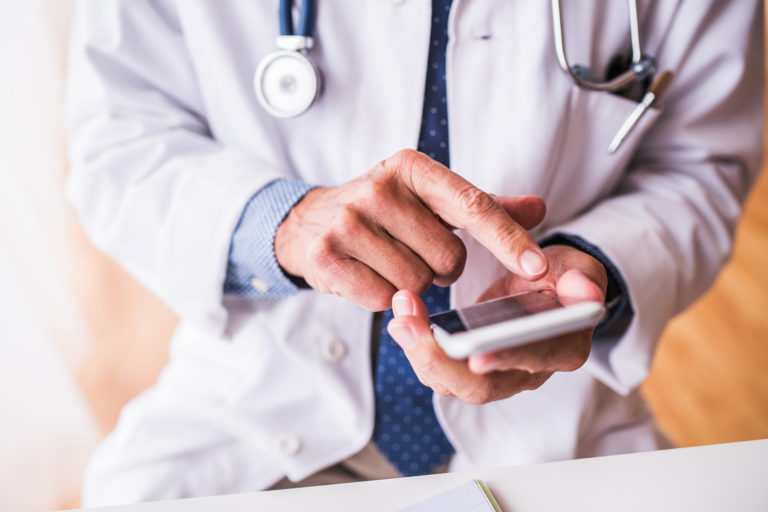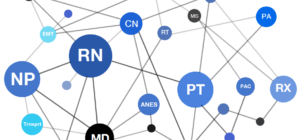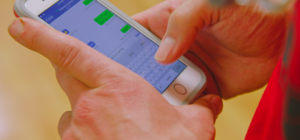Being able to communicate quickly and efficiently is important in any industry. Take manufacturing plants, for example. A manufacturing plant may have several different facilities, all of which need to be working together. There are loading docks, warehouses and work lines, and they all need to communicate seamlessly in order to maintain accuracy and efficiency.
It’s not entirely unlike the way a hospital runs. Beyond the critical need for seamless, accurate and efficient communication, a hospital has the added weight of treating patients, and ultimately saving human lives. If one link in the chain breaks, it negatively impacts everything downstream.
But it’s not just about communication—or about making that communication fast (although fast is important too). After all, pagers are fast. So are phones, tablets and desktops. You could surround yourself with “fast” devices all day long, and they’ll do more harm than good: They’d soon outnumber the hands you have to hold them and become a burden, rather than a benefit.
That’s why “leanness” factors into this, too. Consolidating multiple communications, workflows and apps into a single application on a single mobile device is certainly the way to go, as our customers have found after launching our MH-CURE Platform.
But how do you know when to scale up your current clinical communication and collaboration (CC&C) solution for something that’s even leaner, faster and more accurate? These are the telltale signs it’s time:
Non-Clinical Providers Are out of the Loop
In order to maximize the efficiency of the entire hospital, everyone—from the frontline clinical staff to the operational employees to those sitting in offices upstairs—needs to be part of the communication chain.
I’ve seen hospitals go to great lengths to loop in all clinical staff, like doctors and nurses, but skip other key players like dieticians, pharmacists and admissions staff. There’s a tremendous amount of communication that goes on within non-clinical realms—and they’re all an opportunity to optimize workflows.
That’s why MH-CURE adds unique value. We price the product based on the number of beds, not users—and we do that intentionally: The more people you put on your communication network, the more valuable that network becomes.
Staff Members Suffer From “Utility Belt Syndrome”
If your nurses look like they’re lugging around a utility belt—phones, pagers and tablets galore—it’s time to think leaner. You can get to a point where every other device becomes obsolete after migrating to MH-CURE. Around here, we call it a single pane of glass: You’ve got multiple inputs from pagers, in-house phones and medical reference materials, but only one output—just one device with MH-CURE separating one staff member from another.
The best part? They just need a pocket to hold it. No belts necessary.
Communications Have Gone Awry
Hospitals are fast-paced environments. Staff go on and off shift as providers travel from the clinic to the office to patient rooms, and back again. All of this is a normal part of care delivery.
What’s not so normal are the mish-mashed efforts many clinicians have use to reach each other: from playing phone tag to stationing secretaries on each floor to intercede and relay information between clinicians, patients and families. It’s not uncommon to see a nurse chasing down a provider. Wouldn’t that time be much better spent doing things within their pay grade?
These efforts are not lean, and they lead to lost time, a poor use of staff and less patient face time with providers. If your communications have gone awry, it’s time to consider a tighter, and more effective, mobile strategy.
There’s a Clear Sense of Alarm Fatigue
Alarm fatigue is a pervasive problem: One study that analyzed Johns Hopkins Hospital over a 12-day period showed an average of 350 alerts per bed per day. If you’ve got a 100-bed hospital, that’s about 35,000 alarms ringing daily.
Consolidating communications can help by simplifying the many pings a provider gets into a single device. On the part of MH-CURE, for example, you can make communications even leaner by selecting recipients from a drop-down list, rather than broadcasting messages to everyone. Doing so can remove the alarms that don’t need to be aired hospital-wide while preserving those that do, like patient monitoring systems.
You Need to Improve Your HCAHPS Scores
As alarm fatigue goes down, you might find your HCAHPS scores go up. That’s because a key part of the Hospital Consumer Assessment of Healthcare Providers and Systems (HCAHPS) assessment involves the quietness of the hospital itself—something that doesn’t just benefit providers, but patients too.
With MH-CURE’s Platform, you can eliminate the need for noisy overhead paging systems. And on the devices themselves, users have the option to mute or configure alerts to vibrate instead of ring. All told, these are why the noise levels on patient floors go down after hospitals use our solution:

You’re Ready Clinically, But What About Technically?
If any of those situations apply to your organization, you’re probably in need of a complete mobile upgrade. But first, you’ll need to mind a few things to ensure your technology is ready for a seamless and future-proofed implementation.
As a Mobile Heartbeat customer, your professional services team will walk you through a complete readiness assessment to ensure your technology is up-to-snuff for MH-CURE. Key components of that check include:
- Wi-Fi: Hospital smartphones are 100 percent reliant on the wireless network, so it’s important to design and deploy that network with enough bandwidth and access points to support it. A floor with no coverage means a floor with no communication access—and that’s not good for anyone. As a best practice, we recommend that customers use updated software and hardware from a leading vendor, such as Cisco.
- Telephony: Ideal telephony systems include updated versions from market-leading vendors such as Cisco and Avaya. In our experience, those systems are the ones that have led to the best CC&C setup.
- Double Data Centers: One data center is good. Two is even better, especially if they support low latency geo-redundancy. That way, users can rest assured that their communication solution will never go offline.
When you opt for a solution that can scale for enterprise hospitals, you’re ensuring that your organization will maximize the positive impact it sees, including improvements in employee satisfaction and a boost in HCAHPS scores. MH-CURE users have enjoyed a nearly 50 percent reduction in ambient noise, and nursing staff have been able to shave 31 seconds off of the time it takes to respond to patient calls.
Every hospital, no matter how large, can take advantage of an advanced mobility strategy. With a communication solution that leverages all clinical and operational staff, you know your employees will truly be able to reach anyone at any time.
Download our free white paper, Key Considerations for Implementing Smartphone Technology in a Hospital, to learn more.





